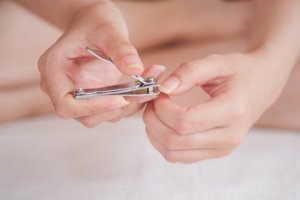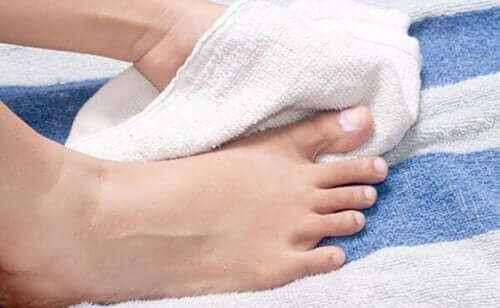Onychocryptosis Prevention and Treatment

An ingrown toenail, also known as onychocryptosis, is a problem. that commonly afflicts the big toe. However, it can also affect any other toe. It happens when the nail grows and penetrates the skin of the toe, leading to pain and inflammation.
Preventing Onychocryptosis
Before you can prevent an ingrown nail, you must first know what causes it. Overall, there are two types of predisposing factors in this condition:
- Congenital factors: These are determined by the shape of a person’s foot. The most common alterations are wide nails and alterations of the toe or the shape of the nail.
- External triggers: These are any external mechanisms that make a nail get stuck in the skin of the toe. The most common reason is the improper use of a nail clipper, inappropriate footwear, and trauma.
Prevention is going to focus on avoiding triggers, so you should follow these guidelines.
1. Wear appropriate footwear
The use of narrow shoes increases the pressure on your toes, especially on the big toe and the little toe. This can make the nail sink into the skin, causing pain and inflammation. Therefore, you must wear wide shoes and avoid high heels, as these put pressure on the toes due to the slope of the foot and the pointy tip.
Another factor that promotes the appearance of ingrown nails is not taking into account your footprint when you select your footwear. This is because the way you walk can influence the lateral part of your nail. To prevent this problem, you must study your tread and select your shoes according to your own needs. Also, you could use special insoles to reduce pressure points if you have to.

Read more: Caring For Your Hands and Feet
2. Proper hygiene and nail cutting
The most frequent cause of ingrown nail is improper nail trimming. To prevent this, you should follow a series of tips for the daily hygiene and grooming of your feet. Also, you should follow a series of guidelines to trim your nails so it doesn’t lead to this condition:
- Place your feet in hot water so that the nails soften and are easier to trim.
- The correct way to cut them is in a straight line. This is because if you round the lateral edges, then they’ll grow towards the skin and penetrate it.
- You should carefully file your nails so as not to leave any remnants that could get inside your skin.
- Use straight and precise nail clippers or scissors, not the curved kind.
- You must thoroughly dry your feet whenever you soak them or after a shower and not keep them wet for too long.
- Also, you must use a suitable soap and wash all the areas where dirt could accumulate.
Read more: Burning Feet? We’ve Got Some Tips and Remedies
Treating Onychocryptosis

It’s important to keep your feet dry to prevent ingrown toenails.
Overall, there are two types of treatments for onychocryptosis:
Conservative treatment
You can opt for this treatment if there’s no presence of granuloma. This is a reddish bump in the affected area formed by blood vessels that usually bleed when it rubs.
This treatment consists of making a smooth cut at the edge of the nail to remove the part of the nail that’s stuck inside your skin. After, you must bandage it so that the wound closes without becoming infected. Also, you should use techniques that promote the correct growth of the nail. Ask your doctor about them.
Surgical treatment
If conservative treatment isn’t enough and granuloma is present, then you’ll need an ambulatory surgery. There are several techniques for an ingrown nail, but the most common is to remove the nail totally or partially together with the infection. This will ensure that the problem goes away permanently.
If you have any questions, make sure to ask your doctor.
All cited sources were thoroughly reviewed by our team to ensure their quality, reliability, currency, and validity. The bibliography of this article was considered reliable and of academic or scientific accuracy.
- DeLauro, N. M., & DeLauro, T. M. (2004). Onychocryptosis. Clinics in Podiatric Medicine and Surgery. https://doi.org/10.1016/j.cpm.2004.05.009
- Langford, D. T., Burke, C., & Robertson, K. (1989). Risk factors in onychocryptosis. British Journal of Surgery. https://doi.org/10.1002/bjs.1800760114
- Daniel, C. R., Iorizzo, M., Tosti, A., & Piraccini, B. M. (2006). Ingrown toenails. Cutis.
This text is provided for informational purposes only and does not replace consultation with a professional. If in doubt, consult your specialist.








